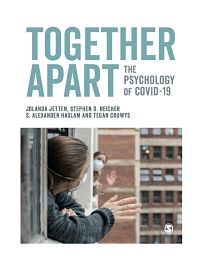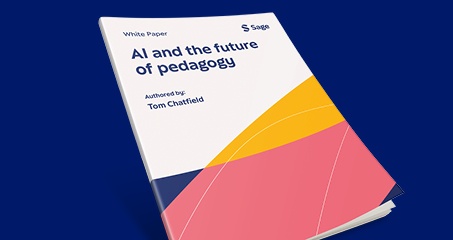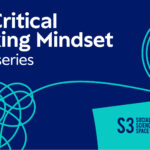Behavior Change Amid COVID: Excerpt from ‘Together Apart’
On March 11th 2020, the World Health Organization (WHO) issued a statement confirming that COVID-19 was a pandemic. WHO experts advised that from this point onwards, governments’ main challenge would be to ‘bend the curve downwards’ as this would help to prevent a surge in infections and stop hospital Intensive Care Units (ICUs) becoming overwhelmed. What added weight to WHO’s calls were examples of countries that had already lost control of the virus, and were now facing large numbers of fatalities due to ICUs being overrun (e.g., Italy, Spain). Eager to avoid repeating this scenario, most other governments acted swiftly, urging their citizens to wash their hands more often, to keep their distance from each other, and to avoid crowds. Some countries went further and introduced forced lockdowns (e.g., France, South Korea). Nevertheless, other countries (e.g., the U.K., Netherlands, Sweden) initially deviated from WHO advice by pursuing an approach which sought to expose people to the novel coronavirus and thereby develop ‘herd immunity’ to it.
This chapter critiques the model of human frailty on which this decision was based (a model that we first discussed in Chapter 1). As a counterpoint to this, it suggests that social identity processes are a key source of human strength, and that leaders who tap into these are best positioned to drive the forms of behaviour change required to defeat COVID-19.

Government policy to address COVID-19 was initially dictated by concerns about human weakness
In the case of the , there are several possible reasons why its leadership was initially reluctant to enact recommended physical distancing measures. First, the U.K. government was concerned that physical distancing measures would have to be sustained for a long period of time, placing a heavy burden on the U.K. economy and risking compliance ‘fatigue’ (Hahn et al., 2020; Mills, 2020). A second, related reason was that successive Conservative governments in the U.K. had become enthralled with behavioural economics — a trend started by David Cameron’s government, which established the U.K. Behavioural Insights Team (BIT) in 2010. Several sources have suggested that it was BIT chief executive David Halpern who first floated the idea of going down the path of ‘herd-immunity’ (Boseley, 2020), and who first warned that citizens could fall victim to physical distancing ‘fatigue’ (Sodha, 2020). This, however, is something he has consistently denied (Conn et al., 2020). Yet regardless of its precise source, an unintended consequence of this commitment to behavioural economics was that, in line with the core logic of this framework, key policymakers had come to see ordinary citizens as error-prone and weak.
It seems likely that these twin factors explain why, when seeking to manage the COVID-19 crisis, the U.K. government relied for so long on relatively minimal behavioural interventions (e.g., amusing adverts to encourage people to wash their hands and keep their distance from each other), and why it took so long to embrace lockdown strategies. This was the thrust of an open letter signed by 681 social scientists expressing concern about the lack of an evidence to support the idea that a weak public would quickly become tired of complying with government directives (Mills, 2020).
More generally, as several commentators noted, the U.K. Government’s initial policy settings reflected a bleak view of its citizens’ psychology and will power — seeing them as having limited capacity ‘to do the right thing’ and thereby making herd-contamination inevitable (Yates, 2020). Similar criticisms emerged in the Netherlands where the government’s commitment to behavioural economics had led it to underestimate citizens’ capacity to sustain physical distancing (Dujardin, 2020).
Governments increasingly seek to change social behaviour via ‘nudges’
They’re [the] rules that need to be in place, and everybody must follow them and stay at home wherever possible. […] we’ve set those rules, we’re enforcing against those rules, and we reiterate those rules, because that is the best way to be able to bend the curve down and stop the spread of the virus. (Hancock, 2020)
As this statement from the British Health Secretary Matt Hancock illustrates, governments facing crises often resort to the default strategy of seeking to secure policy compliance through top-down legislation and enforcement. However, in recent decades, they have increasingly experimented with new ‘modes of governance’. One such mode is liberal (or soft) paternalism (Thaler & Sunstein, 2003). This is informed by a belief that citizens should retain choice over their actions but nevertheless be given ‘steers’ — notably in the form of subtle behavioural ‘nudges’ — to encourage them to behave in particular ways that are ‘good’ for them and society. In this vein, governments around the Western world have resorted to a range of tried-and-tested nudges to encourage citizens to do such things as recycle, save for retirement, and sign up for organ donation. Evidence suggests that this approach can be quite effective when dealing with relatively uncomplicated policy issues (e.g., as documented in Thaler & Sunstein, 2009). However, this effectiveness is less proven when it comes to dealing with complex (a.k.a. ‘wicked’) policy issues.
Liberal paternalism (and behavioural economics more generally) is underpinned by a notion that humans are imperfect information processors whose capacity to make sound decisions is compromised by a propensity to resort to cognitive shortcuts. This model has a long pedigree in social psychology (and social science more generally). It flows directly from the view that humans are ‘cognitive misers’ who generally process and respond to social information in a way that minimises intellectual demands but introduces error (after Fiske & Taylor, 1984; for critiques see Gigerenzer, 2018; Oakes et al., 1994).
The core idea here is that there is too much information in the world for people to process it all. Instead, people ‘make do’ by relying on heuristics (i.e., cognitive rules of thumb) that provide an understanding which is generally ‘good enough’ for their purposes, but nevertheless susceptible to error and bias. One example of such a heuristic is the availability bias — the tendency to attend and give more weight to information which is readily accessible than information which is not (Tversky & Kahneman, 1973). The logic behind nudges is that such biases can be reverse-engineered and exploited in ways that make particular “good” behaviours more likely. For example, policy makers might make use of the availability bias by providing people with a list of behavioural options where those behaviours that they want people to engage in are prominent, while those they seek to discourage are less prominent or absent.
The idea that people can be nudged covertly in this way is not new. As Robert Cialdini (1984) showed in his book Influence, marketing experts have perennially resorted to various covert behaviour change techniques to increase sales. However, the idea that governments might encourage particular behaviours by changing the ‘choice architecture’ that surrounds them was popularized more recently through best-selling books like Nudge (Thaler & Sunstein, 2009) and Thinking, Fast and Slow (Kahneman, 2011). Although sceptics continue to question whether nudging is ethical (Engelen & Schmidt, 2020) and best regarded as a passing fad (McDaid & Merkur, 2014), this has done nothing to hold back the rapid proliferation of Behavioural Insights Teams (or ‘nudge units’) advising governments around the world on how to best shape their citizens’ behaviour.
Radical behaviour change requires identity-based norm internalisation
There is growing consensus that, on their own, nudges have limited usefulness as tools for achieving radical forms of large-scale behaviour change. As we have argued elsewhere, the main problem here is that nudges fail to secure norm internalisation (Mols et al., 2015). While it is possible to use nudges to change behaviours that are passive and produce unthinking compliance, nudges are ineffective in securing behaviour changes that require deep commitment to a new course of collective action organised around a common cause. Of course, COVID-19 has required just such a course of action.
Without norm internalisation, ‘old habits’ would be expected to reappear as soon as the choice architecture is reversed. For example, while customers can be nudged into staying at least 1.5 metres away from one another by using floor marking — or into cleaning their hands by placing a hand-sanitizer next to a door — once the floor marking or hand-sanitizer are no longer present, people return to their former unsafe ways. Moreover, unless relevant norms are in place, they still may never ‘do the right thing’. So, while such interventions would go some way to reduce the short-term spread of the virus, what is required to secure lasting behaviour change (and avoid gradual fatigue) is a deep commitment to new ways of behaving, underpinned by a sense that this was the right thing for ‘us’ to do.
The main way to achieve behaviour change of this form is through overt appeals to people’s memberships in valued groups — that is, those that define their group-based sense of self. Only when people have come to define themselves in terms of a given group membership (e.g., as German) and believe that certain forms of behaviour are normative for that group — and indeed required to secure its future — that they will be motivated to do the hard work that is needed for behaviour change. Moreover, as this belief is identity-enhancing it is inherently rewarding and it will seem less like hard work (Cruwys et al., 2020). In contrast to the logic of nudge, this leadership casts and treats citizens not as sheep, but as lions whose strength emerges when they work in tandem to achieve shared goals (Steffens et al., 2018).
Looking outside the U.K., it is clear that many leaders’ first instinct was to adopt precisely this model — engaging with citizens as active intelligent agents, rather than as passive cognitive misers, through appeals to shared social identity. For example, it was seen in addresses by Canada’s Prime Minister Justin Trudeau (Wherry, 2020) and Germany’s Chancellor Angela Merkel (Davidson, 2020). Furthermore, once it became clear that urgent action was needed to stop the spread of the COVID-19 virus, the British Prime Minister Boris Johnson himself began to engage in identity entrepreneurship as a central part of his efforts to persuade citizens to follow government advice. In particular, this sense of ‘our’ collective potential was foregrounded in his address to the nation on March 23:
Each and every one of us is now obliged to join together, to halt the spread of this disease, to protect our NHS, and to save many, many thousands of lives. … And I know that as they have in the past so many times, the people of this country will rise to that challenge. And we will come through it stronger than ever. We will beat the coronavirus and we will beat it together. (Johnson, 2020).
Following this, the U.K. achieved a rapid ‘flattening of the curve’ that exceeded the expectations of even the most optimistic epidemiologists (Woodcock, 2020). Tragically, though, the damage of the earlier ‘herd immunity’ philosophy had been done, and it was too late to stop Britain recording the highest number of COVID-19 infections and deaths in Europe (Conn et al., 2020)
As outlined in Section A of this book, these two competing models of human psychology, namely Behavioural Economics and Social Identity Theory (Reicher et al., 2020), are of particular relevance to the COVID-19 crisis. The former focuses on individuals as individuals and views them pessimistically as ‘fragile rationalists’ who are prone to error (Reicher, 2020). The latter recognizes people’s capacity to act and behave as group members and offers a more optimistic model of people as collective meaning-makers who — if provided with the right leadership — are capable of exerting themselves for the greater good. The initial phases of responses to the COVID-19 crisis served to bring the differences between these approaches into stark relief, and to expose the inadequacies of a model framed around human deficiency. Certainly, when one is looking for people to behave like lions, it is unhelpful to have only ever thought them capable of behaving like sheep.
Explore the social influence chapters of Together Apart
Introduction to Social Influence
Leadership | S. Alex Haslam
The ultimate proof of leadership is not how impressive a leader looks or sounds, but what they lead others to do.
Compliance and Followership | Niklas K. Steffens
What drives compliance and followership? When do people choose not to comply with advice or regulations? What are helpful (and not so helpful) forms of followership?
Behaviour Change | Frank Mols
Social identity processes are a key source of human strength, and that leaders who tap into these are best positioned to drive the forms of behaviour change required to defeat COVID-19.
Conspiracy Theories | Matthew Hornsey
Conspiracy theories are often peddled by leaders and people in positions of authority with a view to shoring up support for a worldview which they represent and are seeking to advance.


































































































